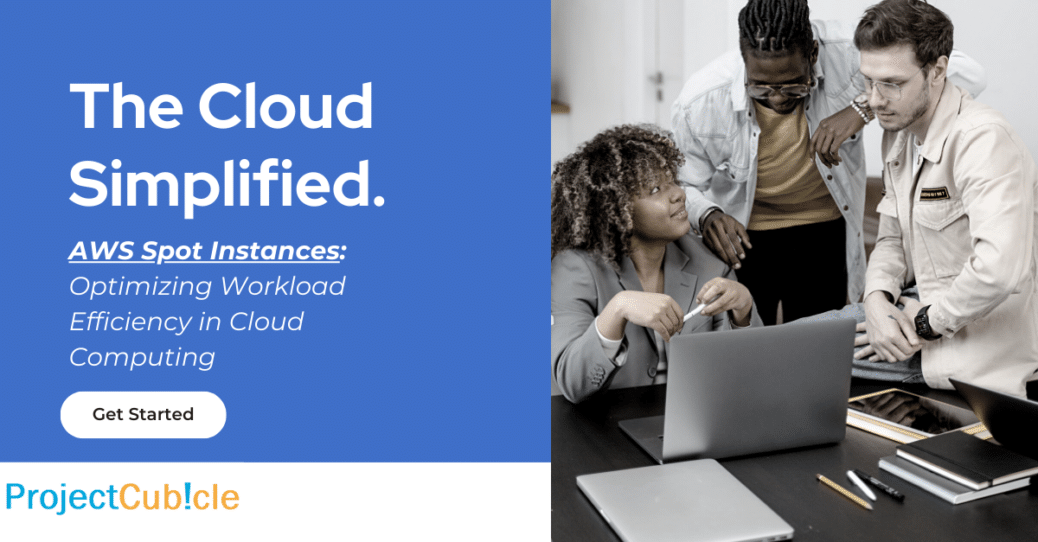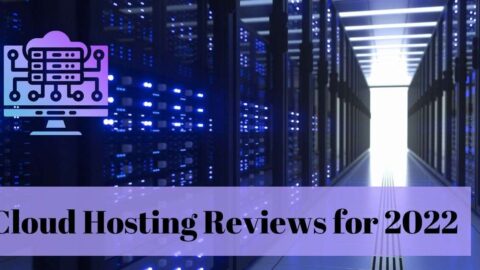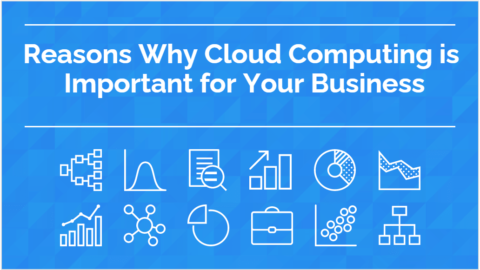AWS Spot Instances: Optimizing Workload Efficiency in Cloud Computing
In the dynamic landscape of cloud computing, Amazon Web Services (AWS) stands out as a frontrunner, providing a diverse range of services tailored to meet the varied needs of businesses. Among these services, AWS Spot Instances shine as a potent tool for streamlining workload efficiency while keeping costs in check. This comprehensive guide will delve deep into the intricacies of AWS Spot Instances, elucidating the reasons and scenarios in which they should be employed, and furnishing a step-by-step roadmap to seamlessly integrate them into your workflow.
Table of Contents
Understanding AWS Spot Instances
AWS Spot Instances introduce a novel dimension to cloud computing resource management. Unlike the conventional On-Demand or Reserved Instances with fixed price tags, Spot Instances provide resources at significantly reduced costs. However, there’s a catch—these instances are accessible only when there’s excess capacity available in AWS data centers. This dynamic pricing model results in variable costs for Spot Instances, fluctuating based on supply and demand dynamics.
Why Opt for AWS Spot Instances?
1. Cost Optimization: The paramount allure of AWS Spot Instances is their cost efficiency. By utilizing spare capacity, AWS offers instances at a fraction of the cost of On-Demand or Reserved Instances. This renders them a compelling choice for businesses aiming to optimize their cloud expenditure.
2. High-Performance Computing (HPC): For workloads demanding immense computational muscle but not time-sensitive execution, Spot Instances can prove to be a game-changer. Tasks encompassing intricate simulations, rendering, and data analysis can be turbocharged without incurring exorbitant expenses.
3. Batch Processing: Numerous businesses encounter periodic tasks necessitating substantial resources for short durations. AWS Spot Instances are tailor-made for such scenarios, empowering you to harness abundant resources sans committing to long-term financial commitments.
When to Employ AWS Spot Instances?
1. Non-Critical Workloads: Spot Instances are a perfect fit for non-critical workloads that can tolerate intermittent interruptions. If your application can gracefully manage sporadic instance termination, integrating Spot Instances can yield significant benefits without compromising performance.
2. Flexible Workloads: Workloads featuring flexible execution timelines stand to gain from Spot Instances. By defining a malleable window for task completion, you can optimally leverage instances when their availability aligns with your schedule.
3. Diverse Applications: The versatility of AWS Spot Instances spans various domains. From the realms of big data processing and scientific simulations to containerized applications and web crawling, their adaptability knows no bounds.
Maximizing AWS Spot Instance Utility
1. Workload Analysis: Initiate the journey by conducting a comprehensive analysis of your workload’s characteristics and requisites. Identify tasks conducive to Spot Instances by evaluating their adaptability and resilience in the face of interruptions.
2. Instance Selection: Picking the apt Spot Instance type for your workload is pivotal. Factors like CPU capacity, memory specifications, and storage requirements should seamlessly align with the chosen instance type.
3. Bidding Strategy: Securing AWS Spot Instances entails participation in a competitive bidding process. Formulate a bid price that harmonizes with your budget and the prevailing market rates. Keep in mind that if the market price exceeds your bid, your instance might face termination.
4. Instance Interruption Management: To mitigate the impact of instance interruptions, devise your application with fault tolerance as a cornerstone. Employ Amazon Elastic Block Store (EBS) for data persistence and contemplate implementing autoscaling to effectively handle fluctuations in instance counts.
5. Monitoring and Automation: Establish robust monitoring and automation mechanisms to closely track instance availability and facilitate seamless scaling based on real-time demands. Leverage AWS tools like Amazon CloudWatch and AWS Lambda to navigate these waters effectively.
6. Diversification: Ensuring unwavering availability mandates diversifying your instance types and geographical regions. This strategic approach mitigates the risk of complete workload disruption arising from instance unavailability.
Demystifying AWS Spot Instance Pricing: Understanding the Dynamics
In the intricate landscape of Amazon Web Services (AWS), where resource provisioning can make or break your operational budget, AWS Spot Instances emerge as a compelling solution to optimize costs without compromising performance. To truly harness the power of Spot Instances, it’s imperative to unravel the intricacies of their pricing model. In this comprehensive exploration, we delve into the nuanced world of AWS Spot Instance pricing, deciphering its variables, strategies, and implications.
Dynamic Pricing: The Heart of AWS Spot Instances
Unlike traditional pricing models for cloud instances, AWS Spot Instances boast a dynamic pricing structure that ebbs and flows in accordance with the ever-changing supply and demand dynamics within AWS data centers. Essentially, the price of a Spot Instance isn’t set in stone; rather, it reflects the real-time equilibrium between available excess capacity and the demand from users. This fluidity results in instances being available at significantly reduced rates compared to On-Demand or Reserved Instances.
Understanding the Spot Price
The key to comprehending AWS Spot Instance pricing lies in understanding the “Spot Price.” This price represents the maximum amount a user is willing to pay for a particular instance type in a specific Availability Zone. AWS calculates and updates Spot Prices constantly, influenced by factors such as the instance type’s popularity, the overall demand for resources, and the available spare capacity within the data centers.
Factors Influencing Spot Prices
Several factors come into play when determining the Spot Price for AWS Spot Instances:
- Supply and Demand: Spot Prices mirror the interplay between supply and demand. During periods of low demand and ample available capacity, Spot Prices tend to be lower. Conversely, when demand spikes and available capacity dwindles, Spot Prices can surge.
- Instance Type: Different instance types have varying levels of popularity and resource configurations. More sought-after instance types are likely to have higher Spot Prices due to increased demand.
- Availability Zone: Spot Prices can differ across Availability Zones within a region. Some zones might have more available capacity, leading to lower Spot Prices.
- Historical Pricing: AWS provides historical Spot Price data, enabling users to analyze trends and forecast potential price fluctuations.
Strategies for Spot Instance Pricing
Effectively navigating the dynamic pricing landscape of AWS Spot Instances requires adopting strategic approaches:
- Setting Bid Prices: Users bidding above the current Spot Price have a higher likelihood of obtaining instances, but they may end up paying more. Setting bids close to the current Spot Price strikes a balance between cost and availability.
- Spot Blocks: AWS offers the option of Spot Blocks, where users commit to a fixed-duration usage window. In return, they gain instances at a discount compared to On-Demand Instances. This strategy provides cost predictability while leveraging the Spot pricing model.
- Flexible Bidding: Employing flexible bidding strategies, such as using a bid strategy that automatically adjusts based on the current Spot Price, can optimize instance acquisition.
Mitigating Instance Interruptions
While Spot Instances offer compelling cost benefits, they can be interrupted if the Spot Price surpasses the user’s bid. To mitigate disruptions, consider the following:
- Instance Diversification: Distribute workloads across multiple instance types and Availability Zones to minimize the impact of instance terminations.
- Fault-Tolerant Architectures: Design applications with fault tolerance in mind. Utilize Amazon Elastic Block Store (EBS) for data persistence and implement auto-scaling to adapt to changes in instance availability.
Conclusion: Mastering the Dance of Spot Instance Pricing
AWS Spot Instances, with their dynamic pricing paradigm, hold the potential to revolutionize the way businesses optimize their cloud costs. By understanding the underlying factors influencing Spot Prices and implementing strategic bidding and workload distribution, organizations can seamlessly integrate Spot Instances into their infrastructure while achieving substantial cost savings. The intricate choreography between supply, demand, and Spot Prices underscores the importance of a well-informed approach to Spot Instance procurement. As you navigate this dynamic landscape, remember that the dance of Spot Instance pricing requires not only agility but also a strategic finesse to extract maximum value from your cloud investments.
In Conclusion
In the intricate realm of cloud computing, AWS Spot Instances emerge as a potent panacea for businesses seeking a harmonious equilibrium between cost optimization and performance enhancement. By grasping the distinctive advantages they present and executing astute utilization strategies, you can harness the full potential of these instances to expedite your operations without straining your budget. As the cloud landscape continues to evolve, AWS Spot Instances stand as a testament to innovation, enabling enterprises to traverse the cloud with a blend of efficiency and efficacy that’s second to none.
Seizing the Power of AWS Spot Instances: A Case Study
To further illuminate the potential of AWS Spot Instances, let’s delve into a hypothetical case study that underscores the strategic implementation of these instances in a real-world scenario.
Case Study: Optimizing Data Analytics Workloads
Scenario: Imagine a medium-sized e-commerce company “EcomTech” that experiences periodic spikes in data analytics demands. During peak shopping seasons, such as Black Friday or Cyber Monday, the company encounters a significant surge in data analysis requirements for customer behavior insights, inventory management, and sales forecasting.
Challenge: EcomTech’s existing infrastructure struggles to cope with the rapid influx of data analysis requests during peak periods. The company is faced with the challenge of scaling its resources efficiently to accommodate the heightened demand while ensuring cost-effectiveness.
Solution: EcomTech decides to leverage AWS Spot Instances to optimize its data analytics workloads during peak shopping seasons.
Step 1: Workload Analysis
EcomTech begins by assessing its data analytics workload characteristics. They identify tasks that are suitable for Spot Instances—batch processing jobs that can be divided into smaller, independent tasks. These tasks are amenable to interruption, as the system can resume processing without compromising the overall workflow.
Step 2: Instance Selection
Given the computational nature of data analytics, EcomTech opts for Spot Instances equipped with ample CPU and memory resources. Also, this choice aligns with the company’s analytical requirements and ensures efficient processing.
Step 3: Bidding Strategy
EcomTech researches current market rates for Spot Instances and sets a bid price that aligns with its budget constraints. Also, to secure the instances without bidding excessively, they use historical data on Spot Instance pricing trends during previous peak periods.
Step 4: Instance Interruption Handling
To mitigate the impact of instance interruptions, EcomTech architects its data analysis workflow to be fault-tolerant. They utilize Amazon Elastic Block Store (EBS) for storing intermediate results, ensuring that even if an instance is interrupted, the progress is preserved.
Step 5: Monitoring and Automation
EcomTech employs Amazon CloudWatch to monitor instance availability and performance in real-time. Also, based on predefined thresholds, they’ve set up automated scaling using AWS Lambda functions. This ensures that the system can dynamically adjust the number of Spot Instances based on workload fluctuations.
Step 6: Diversification
To enhance availability and reduce risk, EcomTech diversifies its instance types across multiple AWS regions. This strategy minimizes the likelihood of complete downtime due to instance unavailability in a specific region.
Results and Benefits: By adopting AWS Spot Instances for their data analytics workloads, EcomTech achieves remarkable outcomes:
- Cost Savings: The cost of running data analysis jobs during peak periods is significantly reduced compared to using On-Demand Instances. EcomTech saves a substantial portion of its cloud budget.
- Scalability: With the ability to seamlessly scale up or down based on demand, EcomTech successfully handles varying levels of data analysis requests during peak seasons without compromising performance.
- Efficiency: The use of Spot Instances accelerates data processing, enabling EcomTech to extract critical insights from customer behaviors more rapidly. This swift turnaround empowers the company to make informed decisions promptly.
- Flexibility: The flexibility of Spot Instances allows EcomTech to experiment with different instance types and configurations, optimizing performance for specific analytics tasks.
Conclusion: Unlocking Efficiency with AWS Spot Instances
EcomTech’s case study exemplifies the potent impact of AWS Spot Instances on optimizing workload efficiency while managing costs. By strategically implementing these instances, businesses can navigate peaks and troughs in demand with finesse, ensuring that computational resources align seamlessly with their operational needs. Also, as cloud computing continues its relentless evolution, AWS Spot Instances stand out as a dynamic tool that empowers organizations to conquer the challenges of scalability, cost, and performance in unison. By embracing these instances and tailoring their utilization to specific use cases, enterprises can embrace a future where efficiency and innovation coexist harmoniously in the cloud.
Hello, I’m Cansu, a professional dedicated to creating Excel tutorials, specifically catering to the needs of B2B professionals. With a passion for data analysis and a deep understanding of Microsoft Excel, I have built a reputation for providing comprehensive and user-friendly tutorials that empower businesses to harness the full potential of this powerful software.
I have always been fascinated by the intricate world of numbers and the ability of Excel to transform raw data into meaningful insights. Throughout my career, I have honed my data manipulation, visualization, and automation skills, enabling me to streamline complex processes and drive efficiency in various industries.
As a B2B specialist, I recognize the unique challenges that professionals face when managing and analyzing large volumes of data. With this understanding, I create tutorials tailored to businesses’ specific needs, offering practical solutions to enhance productivity, improve decision-making, and optimize workflows.
My tutorials cover various topics, including advanced formulas and functions, data modeling, pivot tables, macros, and data visualization techniques. I strive to explain complex concepts in a clear and accessible manner, ensuring that even those with limited Excel experience can grasp the concepts and apply them effectively in their work.
In addition to my tutorial work, I actively engage with the Excel community through workshops, webinars, and online forums. I believe in the power of knowledge sharing and collaborative learning, and I am committed to helping professionals unlock their full potential by mastering Excel.
With a strong track record of success and a growing community of satisfied learners, I continue to expand my repertoire of Excel tutorials, keeping up with the latest advancements and features in the software. I aim to empower businesses with the skills and tools they need to thrive in today’s data-driven world.
Suppose you are a B2B professional looking to enhance your Excel skills or a business seeking to improve data management practices. In that case, I invite you to join me on this journey of exploration and mastery. Let’s unlock the true potential of Excel together!
https://www.linkedin.com/in/cansuaydinim/










